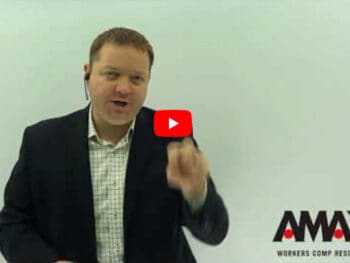Having a loss allocation system(also called chargeback systems) is one of the most important key cost drivers in workers comp cost containment. The divisions causing the losses must be those paying for the losses. Here’s one of the ways I like to set up a chargeback system. Incentivize the behavior you want to encourage; this is a carrot and stick approach. There are 3 components of the Workers Comp Kit Chargeback System: rapid reporting, rapid return to work (RTW) and quick claim closure within 3 months.
Click Link to Access Free PDF Download
1. Take the total incurred each month
2. If the claim was reported within 24 hours of occurrence, a 20 percent refund is applied
3. If the employee returned to work within 4 days (either transitional or full duty) a 30 percent refund is applied
4. Calculate 1 – 2 – 3 to get the total charge for the claim for the month, and subtract from any other previous charges. Thus, as the reserves are lowered and an employee has returned to work, the division will begin getting credits on that claim.
For example:
In May, an employee has an injury and it is reserved for $5,000. The claim was not called in within three days, however the employee returned to work two days following the accident. Therefore the charges would be
1. The total incurred = $5,000
2. Reporting refund = $0
3. RTW refund = $1,500
4. Total charges to the unit = $3,500
In June, the adjuster pays the medical bill of $1,000 and reduces the reserves to $3,000
1. The total incurred is now $4,000
2. Reporting refund = $0
3. RTW refund = $1,200
4. Total charges to the unit = $2,800
5. Since the unit was charged $3,500 in May, they will receive a $700 credit in June (this is the $3,500 less the $2,800)
FREE DOWNLOAD: “5 Critical Metrics To Measure Workers’ Comp Success”
In July, the claim closes for a total of $2,000
1. The total incurred is $2,000
2. Reporting refund = $0
3. RTW refund = $600
4. Total charges to the unit = $1,400
5. Since the unit had paid $2,800 by the end of June, they will get a $1,400 credit for July
Note:
1. Make sure you have an automated system!
2. The system needs to be able to track if the employee returns to work and when the claim was reported. This is important as in the above example if the employee missed 6 days in July because the condition worsened, the RTW refund should be $0.
3. The reports need to be dynamic – i.e. state “if all conditions were met, you would have saved an additional $400.”
©2008 Amaxx Risk Solutions, Inc. May be used with permission. Contact Info@WorkersCompKit.com for permission.
FREE DOWNLOAD: “5 Critical Metrics To Measure Workers’ Comp Success”














